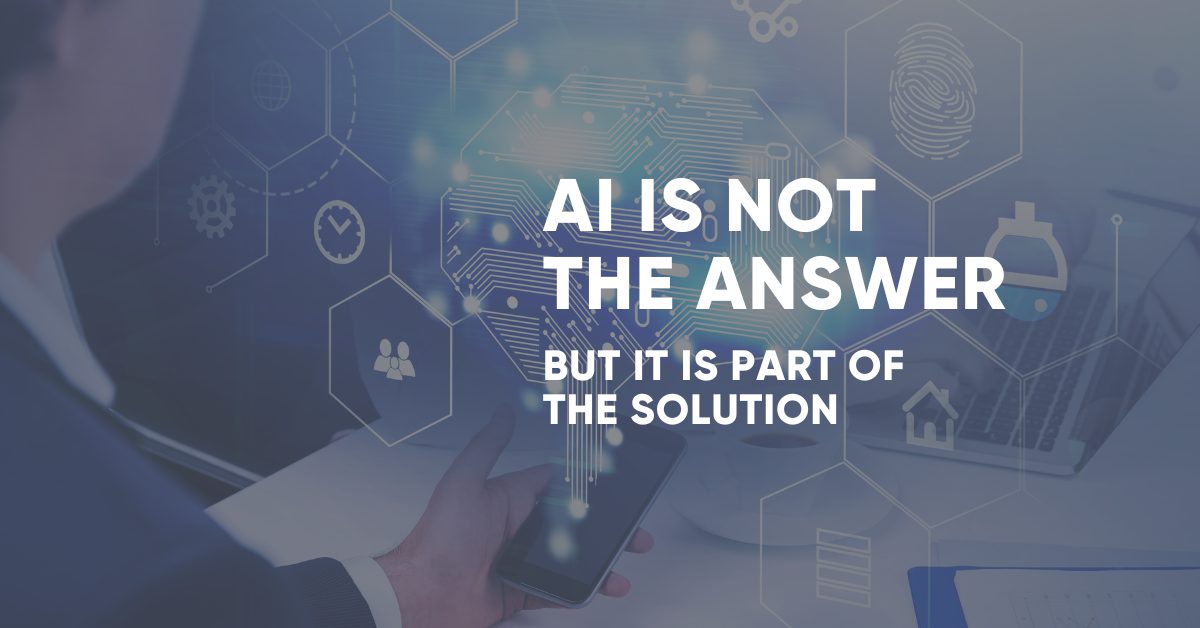I’m sure you’ve seen it. Right now it feels like every company in the world is touting their new AI product or service, and new companies are popping up every day. While it is true that Artificial Intelligence is an amazing tool that has the potential to change how we work, you don’t want to buy into a product or service just because it is driven by AI.
AI has emerged as a buzzword just as much as it is a technology. While it may seem enticing, and many companies are embracing AI solutions just because they are AI-driven, it is important to keep in mind that the real power of AI lies in its ability to solve real-world problems. AI should not be chosen for the sake of AI itself but because it offers tangible solutions to real challenges in industries like Manufacturing, Retail, Utilities, Food and Beverage, and Restaurants. Let’s take a deeper look at some of the ways businesses are already using AI to solve real business issues.

The Power of GenAI Across Industries
The manufacturing industry has been at the forefront of AI adoption, benefiting from automation and predictive maintenance. AI-driven predictive maintenance helps reduce equipment downtime by analyzing sensor data to predict when machines might fail. For example, General Electric uses AI to monitor the performance of aircraft engines, predicting maintenance needs, thus preventing costly breakdowns.
AI is also transforming quality control in manufacturing by identifying defects or irregularities in real-time, significantly reducing the number of flawed products that reach consumers. This not only saves costs but enhances the brand’s reputation for delivering high-quality products.
The retail industry has been quick to recognize the value of AI in improving customer experience and optimizing operations. AI-driven recommendation engines, as seen on platforms like Amazon and Netflix, provide personalized product suggestions to customers, increasing sales and customer satisfaction.
Additionally, computer vision technology in physical retail locations enables stores to implement cashier-less shopping experiences, where customers can pick items and leave without going through traditional checkout lines. Amazon Go, a prime example, uses AI to track items taken from the shelves, charges the customer’s account, and eliminates the need for manual checkouts.
The utilities sector, including electricity and water supply, faces challenges related to infrastructure maintenance and resource allocation. AI helps utilities companies predict potential equipment failures, minimizing service disruptions and maintenance costs. Smart grids, equipped with AI algorithms, optimize energy distribution and minimize waste by analyzing real-time data to respond to changing demand patterns.
For wastewater, organizations like San Antonio Water Systems are using AI to interpret the visual data from remote pipeline inspections to identify and classify cracks, intrusions, and deterioration so they can repair at-risk areas before they become a problem.
In the food and beverage industry, ensuring product quality and safety is paramount. AI is employed to monitor production processes, ensuring that products meet the required standards. For instance, AI-powered sensors can detect contaminants or impurities in food, preventing harmful products from reaching consumers.Computer Vision with AI inspections can detect ripeness in produce and help sort items faster and more accurately than human inspectors.
Additionally, AI is used for demand forecasting, helping businesses optimize inventory and reduce food wastage. Companies like McDonald’s and Starbucks use AI-driven analytics to predict customer preferences and optimize their supply chain, leading to cost savings and improved customer service.
Restaurants are increasingly turning to AI solutions to streamline operations and enhance customer experiences. AI-driven chatbots and virtual assistants take orders, make reservations, and answer customer queries, improving service efficiency and reducing wait times. Domino’s Pizza’s chatbot, for example, allows customers to place orders through voice commands or text messages.
AI is also employed for menu optimization, helping restaurants adjust their offerings based on customer preferences and local trends. This ensures that the menu remains relevant and appealing to customers, ultimately increasing sales.
No matter how much companies promise, AI is not the magic solution to all problems – but it is undoubtedly a valuable tool for solving real-world challenges across a spectrum of industries. Businesses should not adopt AI simply for the sake of AI, but rather for the concrete benefits it can bring, such as increased efficiency, improved product quality, enhanced customer experiences, and cost savings.
AI’s potential is vast, and its applications continue to expand. As businesses embrace AI solutions that address their specific needs and pain points, they will find that AI is indeed part of the solution, helping them navigate the ever-changing business landscape successfully. The key is to approach AI strategically, identifying how it can bring about meaningful improvements and positive outcomes in a world that is increasingly driven by data and automation.

